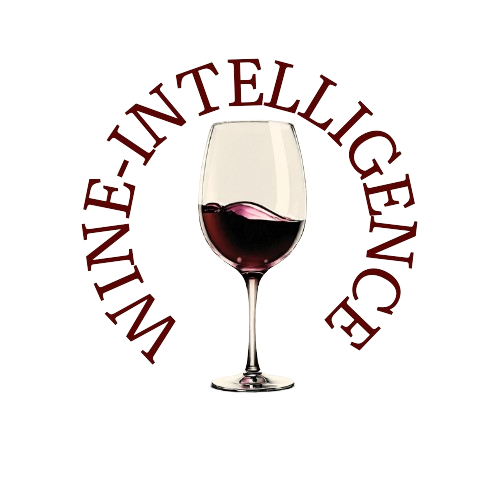While the global still wine sector faces slowing demand and structural change, sparkling wines continue to shine in international markets—both literally and figuratively.
According to data from the International Organization of Vine and Wine (OIV), global production and consumption of sparkling wines have nearly doubled since 2002, driven largely by the enduring success of Italian Prosecco and the growing demand outside Europe.
This expansion contrasts with the contraction seen across still wine categories, underscoring the resilience and adaptability of sparkling wines in a changing global wine economy.
Italy Leads the World with a Prosecco-Driven Surge
Italy has solidified its position as the world leader in sparkling wine production, accounting for one-third of the global total. In 2024, Italian sparkling wine exports rose 12% in volume compared to the previous year—a testament to the ongoing international appeal of Prosecco and its accessible, celebratory style.
Regions like Veneto and Friuli Venezia Giulia have become synonymous with quality and consistency, exporting vast quantities not only across Europe but also to the United States, the United Kingdom, and Asia. Moreover, Prosecco’s adaptability in mixed drinks—especially in the ever-popular Spritz—has broadened its reach among younger consumers seeking lighter, fresher, and more affordable sparkling alternatives.
France and Germany Follow with Tradition and Reinvention
Behind Italy, France retains a crucial 16% share of global sparkling wine production, with Germany close behind at 14%. Yet, within France, an important transformation is unfolding. Beyond the prestige of Champagne, Crémant producers are expanding rapidly, capturing the attention of both domestic and international markets.
Crémant, which spans eight appellations including Alsace, Burgundy, Savoie, and Touraine, is increasingly being seen as a high-quality yet affordable alternative to Champagne. In Bordeaux, this shift has been particularly striking.
As Dominique Furlan, president of a local cooperative, explains, “five years ago, three-quarters of our production was red wine—now, half is Crémant.” The transition reflects not only a response to evolving consumer preferences but also a strategic adaptation for economic sustainability.
Crémant’s Record Year and Market Strategy
The National Federation of Crémant Producers and Makers (FNPEC) reported a record 2024, with 114 million bottles sold, marking a 6% increase over 2023 and a 35% rise since 2020.
This growth comes from a deliberate focus on quality, diversity, and positioning. Producers are:
- Launching special editions to highlight terroir and craftsmanship;
- Emphasizing native grape varieties for authenticity;
- Targeting the EUR 9 – EUR 15 price range, a segment where Champagne has lost ground, especially in mass retail.
The FNPEC also aims to strengthen Crémant’s presence in key export markets such as the UK and the US, where its competitive price point can better absorb recent tariff pressures compared to higher-end sparkling categories.
Champagne’s Premium Dilemma: Value Holds, Volume Slips
In contrast, Champagne—the benchmark of sparkling wine luxury—has experienced a decline in sales volume, though the total transaction value remains on the rise.
Industry analysts link this paradox to inflation, rising production costs, and deliberate price increases by major producers, who have prioritized maintaining exclusivity and profitability.
According to Maxime Toubart, president of the General Syndicate of Champagne Winegrowers (SGV), “our region has made major investments in quality and sustainability, which inevitably raise costs but also ensure the long-term reputation of Champagne.”
He emphasizes that price reductions are not being considered, asserting that Champagne continues to deliver strong value for its prestige and production standards.
However, the SGV acknowledges growing competition from Prosecco and Crémant, particularly among younger and price-sensitive demographics. Forecasts for 2025 shipments remain at around 271 million bottles, below the 300 million-plus levels recorded in the previous three years.
Changing Consumer Dynamics: From Prosecco to Champagne
Experts like Richard Halstead, a leading market analyst in alcoholic beverages, note that sparkling wines resonate strongly with younger consumers. Their celebratory and occasional consumption patterns make them less vulnerable to global trends toward alcohol moderation.
Interestingly, Prosecco and Spritz serve as entry points for many new wine consumers. As Toubart points out, “these products can be seen as competitors, but also as gateways—once consumers appreciate sparkling wines, they often seek out Crémant or Champagne later on.”
This evolving consumer journey—from casual to premium—illustrates how the sparkling wine segment functions as both a driver of accessibility and a pathway to sophistication within the broader wine market.
A Market of Momentum and Opportunity
The global sparkling wine category remains one of the most dynamic and resilient segments in the wine industry. While Champagne consolidates its luxury positioning, Crémant and Prosecco continue to expand in reach and relevance.
With younger demographics embracing bubbles for both everyday enjoyment and celebrations, and producers innovating across price points and sustainability, sparkling wines are not merely weathering economic challenges—they are reshaping the modern wine landscape.
As the data from the OIV confirms, sparkling wine’s rise over the past two decades underscores its unique blend of tradition, adaptability, and universal appeal—qualities that will likely sustain its effervescence well into the next decade.
Source: Vinetur

